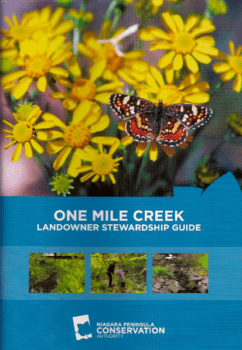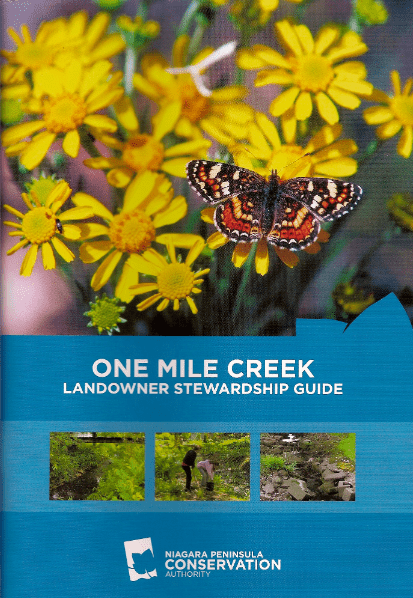Living near water is something that many people want. It can be very satisfying to hear water trickle through the creek, to watch wildlife in your backyard, and to have a natural feature to add aesthetic value to your property.
Anyone who has ever lived next to water knows that along with the joys come many challenges. During storm events, the water in the creek can overflow onto your property causing damage as a result of flooding and erosion to the creek bank.

The Landowner Stewardship Guide developed especially for residents living within the One Mile Creek watershed in Niagara-on-the-Lake provides information about the watershed, how your actions can impact the environment, and gives suggestions for better environmental decision making.
Residents are often not fully aware of how their actions as landowners may be impacting the environment around them, particularity in and around water. Many problems with our local creeks and streams are caused when landowners do seemingly simple things on their property, such as watering their lawn or cutting their grass.
The Landowner Stewardship Guide was developed especially for residents living within the One Mile Creek watershed in Niagara-on-the-Lake (NOTL).
The purpose of the Landowner Stewardship Guide is to provide you with information about the watershed you live in, how your actions can impact the environment, and provide you with options for better environmental decision making. How you manage activities on your property has a role in determining local water and habitat quality. Although no one person can solve all the issues within the One Mile Creek watershed, as a community we can make a big impact.
- Examples of simple steps that can be taken to improve the water quality and habitat of One Mile Creek, including how to begin restoring the stream on your property to a more natural state.
- Options for reducing water quality impacts from chemicals and other domestic activities.
- Recommended naturalization and riparian plantings, focusing on native plants.

